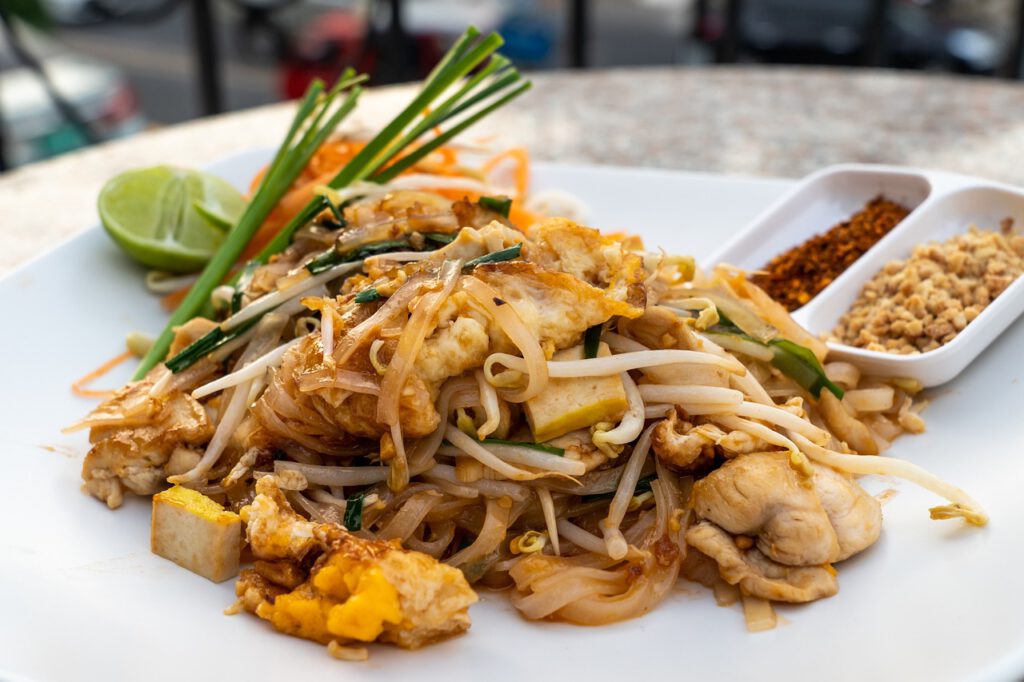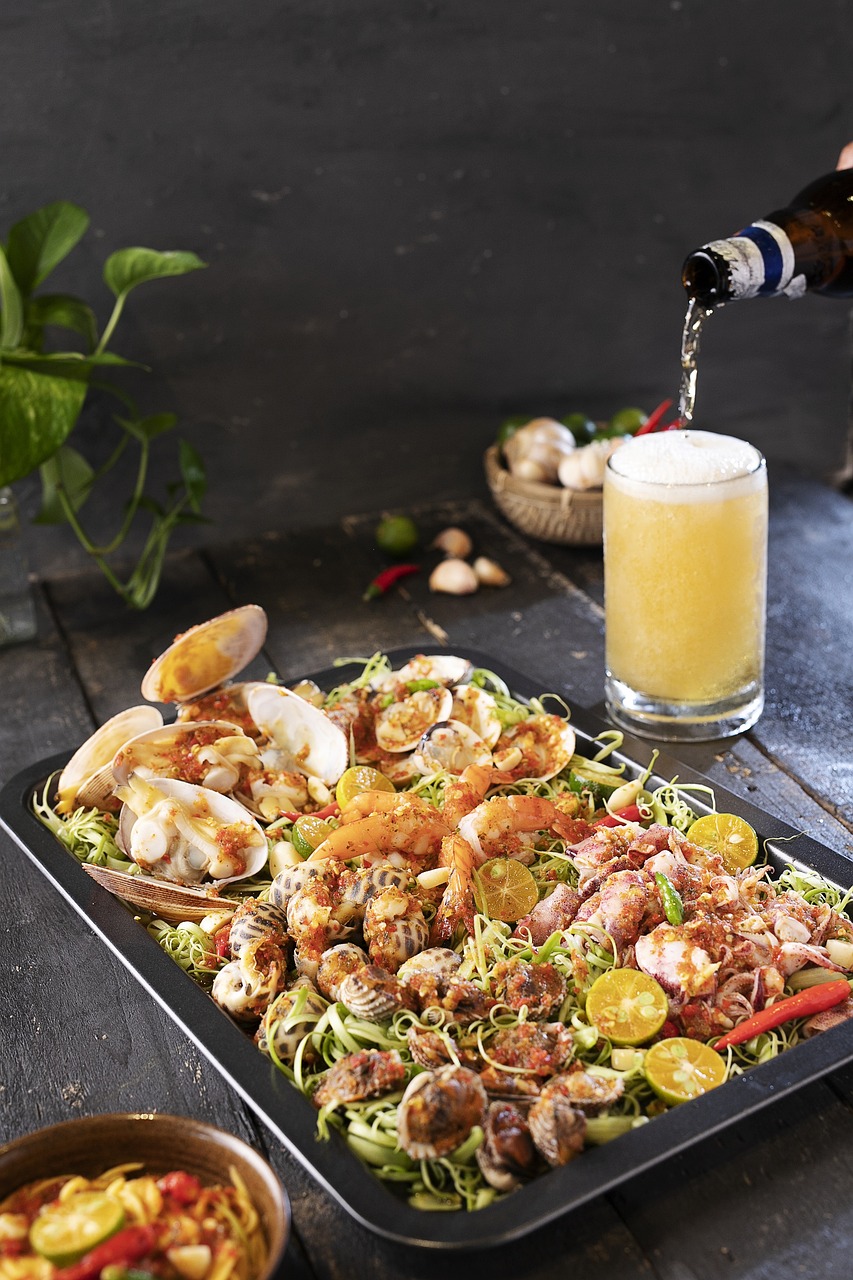What is Thai Food? A Complete Guide to Thai Cuisine
Thai food is famous for its vibrant and diverse flavors. Known for its unique blend of sweet, sour, salty, and spicy elements, Thai cuisine offers an exceptional dining experience. This guide will provide an in-depth look at Thai food, including key ingredients, popular dishes, and the cultural significance behind this celebrated cuisine.
What Makes Thai Cuisine Unique?
Thai cuisine is renowned for its remarkable balance of flavors. The goal in Thai cooking is to harmonize sweetness, sourness, saltiness, and spiciness. This balance creates dishes that are both exciting and satisfying. Influences from neighboring countries like China, India, and Malaysia contribute to the rich variety of Thai food.
Essential Ingredients in Thai Cuisine
Understanding the core ingredients of Thai cooking is key to appreciating its unique flavors. Here are some essential components:
- Coconut Milk: Coconut milk is a staple in Thai cooking. It adds a creamy texture and subtle sweetness to curries, soups, and desserts. Its richness enhances the depth of flavors in many Thai dishes.
- Fish Sauce (Nam Pla): Fish sauce is a fermented condiment made from anchovies and salt. It provides a salty, umami flavor that is essential in Thai cuisine, giving dishes a distinctive depth.
- Lemongrass: Lemongrass adds a fresh, citrusy flavor to Thai dishes. It is commonly used in soups, curries, and marinades to provide a fragrant and zesty note.
- Galangal: Galangal is similar to ginger but with a unique, slightly peppery and citrusy flavor. It is used in soups and curries to add complexity.
- Kaffir Lime Leaves: These leaves impart a distinctive lime flavor to dishes. They are often used in curries, soups, and rice dishes, adding a fresh, aromatic quality.
- Thai Chilies: Thai chilies are small but very spicy. They are crucial for adding heat to Thai dishes, and their spiciness can vary based on the type of chili used.
- Coriander: Both coriander leaves (cilantro) and roots are used in Thai cooking. The leaves add freshness, while the roots contribute a deeper, more intense flavor.
- Palm Sugar: Palm sugar provides a rich, caramel-like sweetness that is different from refined sugar. It is used in desserts and sauces to add complexity.

Popular Thai Dishes
Thai cuisine features a variety of dishes, each showcasing different flavors and ingredients. Here are some of the most popular:
- Pad Thai: Pad Thai is a stir-fried noodle dish known for its balance of flavors. Made with rice noodles, fish sauce, tamarind paste, palm sugar, and chili, it is typically garnished with bean sprouts, peanuts, fresh herbs, and lime wedges. It can include shrimp, chicken, or tofu.
- Tom Yum: Tom Yum is a hot and sour soup with bold flavors. The broth is flavored with lemongrass, kaffir lime leaves, galangal, and Thai chilies. Common ingredients include shrimp, mushrooms, and cilantro. It’s seasoned with fish sauce and lime juice for a tangy taste.
- Green Curry (Gang Kiew Wan): Green curry is known for its vibrant green color from green chilies. The curry paste is cooked with coconut milk to create a creamy and spicy sauce. It often includes vegetables and meat like chicken or beef and is served with jasmine rice.
- Som Tum: Som Tum, or green papaya salad, combines shredded green papaya with tomatoes, carrots, peanuts, and beans. It is dressed with a spicy mixture of fish sauce, lime juice, and Thai chilies, offering a crunchy texture and refreshing taste.
- Massaman Curry: Massaman curry is a rich, mildly spicy dish with Indian influences. It includes spices such as cinnamon, cloves, and cardamom, along with coconut milk. The curry usually features beef or chicken, potatoes, and peanuts.
- Mango Sticky Rice: Mango sticky rice is a classic Thai dessert. It consists of sticky rice cooked in coconut milk and sweetened with palm sugar, served with ripe mango slices. This dessert is creamy, sweet, and satisfying.
Cultural Significance of Thai Cuisine
Thai food plays a central role in Thai culture. Meals are often enjoyed with family and friends, reflecting a strong sense of community. The preparation and presentation of Thai dishes emphasize freshness, balance, and harmony.
The diverse ingredients and flavors in Thai cuisine also highlight Thailand’s geographical and historical influences. The use of spices and herbs shows connections with neighboring regions, while the emphasis on fresh, local produce underscores the importance of local ingredients.
The Art of Thai Cooking
Thai cooking is both an art and a science. It involves balancing flavors and using precise techniques. Creating Thai dishes requires skillful layering of flavors and adjusting seasonings to achieve perfect harmony.
Whether from street food vendors or fine dining restaurants, Thai cuisine is celebrated for delivering complex and satisfying flavors. From spicy curries to tangy salads and sweet desserts, Thai food offers a memorable and delightful culinary experience.
Conclusion
Thai food is a rich and diverse culinary tradition known for its unique balance of flavors and ingredients. Its blend of sweet, sour, salty, and spicy elements makes it a favorite among food enthusiasts. By exploring the key ingredients, popular dishes, and cultural significance of Thai cuisine, you can gain a deeper appreciation for this exceptional culinary heritage.
Whether you’re a seasoned chef or an adventurous eater, diving into Thai food offers a delicious journey into Thailand’s vibrant culinary world. Enjoy discovering the flavors and traditions that make Thai cuisine so special!

